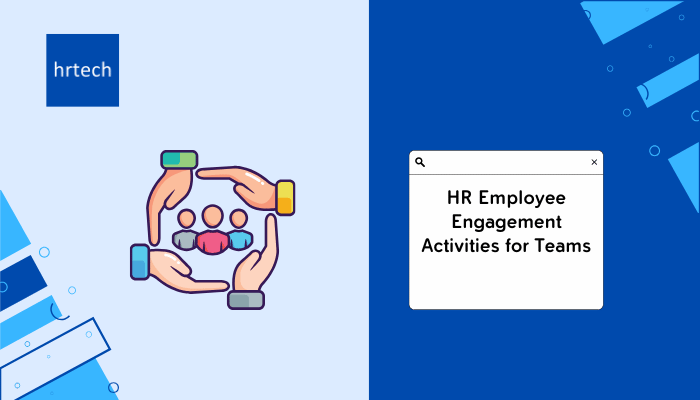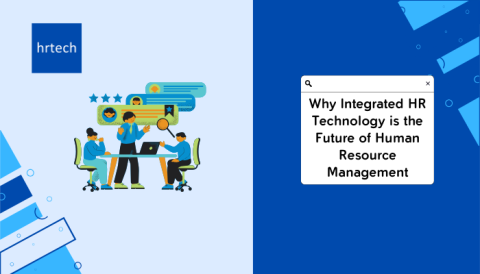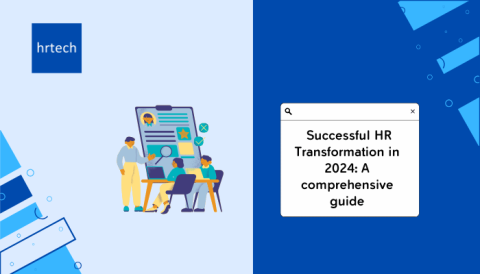Employee engagement is at the heart of every thriving organization. It’s the driving force behind productivity, innovation, and employee retention. According to a study by Drive Research, companies with an excellent corporate culture experience over 4x higher revenue growth, demonstrating the direct link between engagement and financial success.
To foster a positive workplace environment, HR professionals must implement meaningful HR events for employees that boost morale, encourage collaboration, and reinforce a culture of inclusivity.
This comprehensive guide will delve into the importance of employee engagement, provide innovative ideas, and highlight the measurable benefits of these initiatives.
The Importance of Employee Engagement
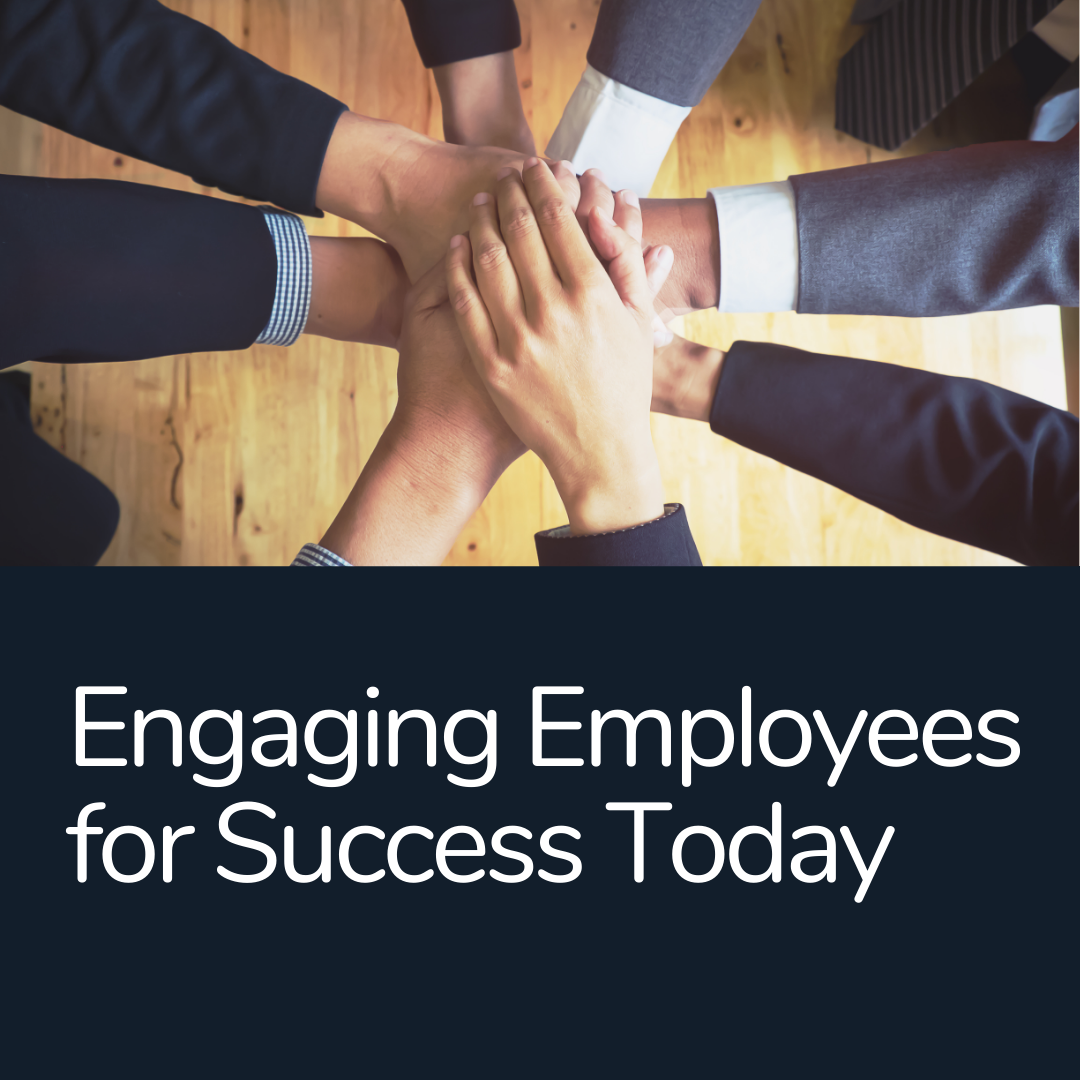
Why does employee engagement matter so much? Engaged employees are more motivated, committed, and aligned with the organization’s goals. Prioritizing HR events for employees is crucial to building a vibrant workplace culture that drives both individual and organizational success. Additionally, effective communication plays a significant role in fostering engagement.
1. Retention and Loyalty
A disengaged workforce costs organizations not only in terms of morale but also financially. The Drive Research Studies show that 33% of employees leave their jobs because they feel bored and lack challenges. Additionally, nearly half of employees who leave cite poor management as a factor. Investing in structured employee engagement initiatives, such as management training and career development programs, can drastically reduce turnover rates and foster loyalty.
2. Productivity and Innovation
Engaged employees contribute significantly more to the organization’s success. Research from Intlock indicates that integrating platforms like Microsoft Teams and SharePoint enhances organizational productivity by facilitating seamless communication and structured workflows. These tools allow employees to collaborate in real time while managing their tasks efficiently.
3. Business Growth
Companies with strong employee engagement programs see over four times higher revenue growth than those without. This correlation underscores the critical role of engagement in driving long-term organizational success. A culture of collaboration, recognition, and inclusivity leads to happier employees—and happy employees are more productive.
Looking to enhance your employee engagement strategy with the right tools and technologies? Visit our hrtech Marketplace to explore innovative solutions that can help you foster a thriving, engaged workforce and drive measurable business growth.
10 Creative Employee Engagement Ideas and Activities
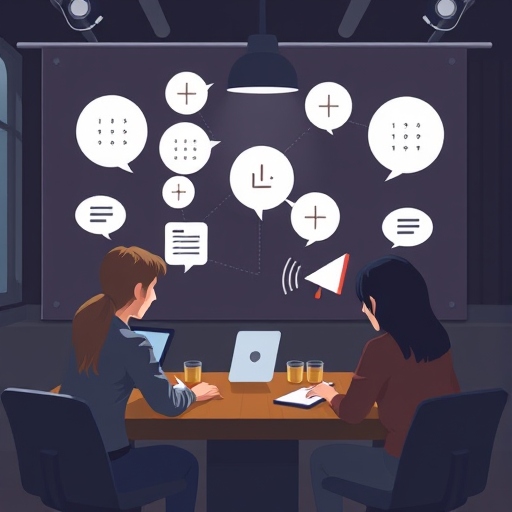
Incorporating creative HR events for employees can transform workplace dynamics, making the office an exciting and engaging environment. These innovative activities not only enhance morale but also encourage collaboration, strengthen team bonds, and align employees with organizational goals.
using technology like Microsoft Teams and SharePoint can further amplify the effectiveness of these initiatives by streamlining communication and feedback loops. For more insights, explore HR Technology and Its Role in Human Resources to understand how tech tools can drive engagement and connectivity.
Whether it’s hosting themed days, launching gamified challenges, or organizing wellness programs, these ideas can make a significant impact on employee satisfaction and productivity. Let’s explore ten actionable and imaginative activities to elevate employee engagement in your organization.
1. Recognition and Rewards Programs
One of the simplest yet most impactful ways to engage employees is through recognition and rewards. Employees who feel appreciated are more likely to remain committed to their roles and contribute positively to the organization. According to a study, companies with effective recognition programs see 31% lower voluntary turnover compared to those without. By incorporating HR events for employees that celebrate individual and team achievements, HR teams can make recognition more consistent and impactful with employee recognition software, helping employees feel valued and motivated.
Building a Culture of Appreciation
Employees thrive when their efforts are acknowledged. A recognition culture fosters trust, boosts morale, and motivates individuals to consistently perform at their best. Utilize platforms like Microsoft Teams to give shout-outs during meetings or use SharePoint for public recognition boards where employees’ achievements are highlighted.
Creative Reward Ideas
Move beyond standard awards to create unique, memorable experiences. Some ideas include:
- Experiential rewards such as tickets to concerts or sporting events
- Personalized thank-you notes from senior leaders
- Custom awards that reflect employees’ personalities or interests
Impact on Engagement
Recognized employees feel valued and are more likely to remain loyal to the organization. Moreover, such initiatives promote a sense of belonging, encouraging other team members to strive for similar recognition.
2. Team-Building Activities
Team-building events play a vital role in creating strong bonds among employees. These activities strengthen trust, improve communication, and foster collaboration, which are critical for creating a cohesive and high-performing workforce. Incorporating well-designed HR events for employees focused on team building can significantly enhance workplace relationships and overall productivity.
Why Team Building is Important
Effective teams don’t just happen, they are cultivated. Research shows that teams with strong interpersonal connections are more likely to be productive and engaged. Team-building activities help employees understand each other’s strengths, improve problem-solving capabilities, and create an environment of mutual respect.
Indoor and Outdoor Activities
- Indoor Activities: Host trivia nights, board game marathons, or escape room challenges. These low-stakes activities promote problem-solving and teamwork.
- Outdoor Adventures: Plan nature hikes, adventure camps, or even volunteer clean-up drives. Physical challenges like these build camaraderie while supporting wellness.
Enhancing Collaboration
Platforms like Microsoft Teams support day-to-day teamwork, but these informal events add a personal touch to professional relationships. Employees who trust their colleagues are more likely to collaborate effectively on work-related projects.
3. Growth and Learning Opportunities
Professional growth is a top priority for today’s employees, and providing ample opportunities for learning and development is essential for keeping them engaged and motivated. When employees feel their careers are progressing, they are more likely to stay loyal and contribute meaningfully to the organization. Designing HR events for employees around growth and learning not only addresses their desire for advancement but also equips them with skills that benefit the organization as a whole.
Why Growth Opportunities Matter
The modern workforce craves continuous development. According to Drive Research, only 29% of employees are satisfied with the career advancement opportunities at their workplace. This highlights the importance of creating dynamic and engaging opportunities for professional growth.
Types of Growth and Learning Initiatives
Workshops and Training Programs:
Organize in-person or virtual workshops cu to employees’ specific needs. Topics can range from technical skills and leadership development to soft skills like communication and emotional intelligence.
E-Learning Platforms:
Provide access to digital learning resources such as Coursera, LinkedIn Learning, or industry-specific platforms. Use SharePoint to centralize learning materials, making them accessible and easy to navigate.
Lunch-and-Learn Sessions:
Host informal learning sessions during lunch hours where employees can learn from experts or peers. Topics could include productivity hacks, industry trends, or personal finance management.
Mentorship Programs:
Pair employees with experienced mentors who can guide their career development. This fosters cross-generational knowledge transfer and builds meaningful workplace relationships.
Job Rotation and Cross-Department Projects:
Allow employees to explore different roles or work with other departments to broaden their skillsets and gain a deeper understanding of the organization.
4. Enhancing Communication and Feedback Loops
Transparent communication is the foundation of any successful organization. It fosters trust, encourages collaboration, and ensures that employees feel heard and valued. By incorporating initiatives into HR events for employees that focus on open dialogue and feedback, HR professionals can create a workplace culture where employees are empowered to contribute ideas and address concerns effectively.
The Importance of Communication in the Workplace
Open communication channels ensure that employees understand their roles, align with the organization’s goals, and feel connected to their teams. Research shows that companies with strong communication practices are 3.5 times more likely to outperform their competitors. Furthermore, effective communication leads to higher levels of employee engagement, job satisfaction, and productivity.
Strategies to Enhance Communication and Feedback
Regular Check-Ins:
Schedule one-on-one meetings between managers and team members to discuss goals, challenges, and progress. These sessions build rapport and create a space for open dialogue.
Team Huddles and Town Halls:
Organize frequent team huddles or company-wide town halls to share updates, celebrate successes, and address questions. Use platforms like Microsoft Teams to facilitate virtual town halls for remote employees.
Anonymous Feedback Channels:
Set up anonymous suggestion boxes or use digital tools to collect honest feedback. This can encourage employees who might otherwise hesitate to voice their opinions.
Pulse Surveys:
Conduct short, regular surveys to gauge employee sentiment on specific topics. Share results transparently and outline actionable steps based on the feedback.
Workshops on Effective Communication:
Host HR-led workshops as part of HR events for employees to train teams on communication skills, active listening, and constructive feedback techniques.
5. Prioritizing Work-Life Balance
The line between work and personal life is often blurred, especially in hybrid work environments. Employees are increasingly seeking employers that prioritize their well-being and provide flexibility to manage their personal and professional responsibilities. Incorporating HR events for employees that emphasize work-life balance can significantly improve morale, reduce burnout, and enhance overall productivity.
Why Work-Life Balance Matters
Work-life balance isn’t just a nice-to-have; it’s a necessity for employee well-being. Studies reveal that employees who feel they have a good balance between work and personal life are likely to be productive and 30% more likely to stay with their current employer. Conversely, a lack of balance can lead to increased stress, absenteeism, and even health issues, ultimately affecting workplace efficiency.
Key Strategies to Promote Work-Life Balance
Flexible Work Arrangements:
- Offer flexible hours, remote work options, and hybrid models to empower employees to work in a way that suits their lifestyle.
- Allow compressed workweeks, where employees work longer hours for fewer days, giving them an extra day off.
Time-Off Policies:
- Encourage employees to take their allotted vacation days and consider offering additional personal or mental health days.
- Celebrate life events like birthdays, anniversaries, or family milestones with half-day leaves or special recognition.
No-Meeting Days:
Dedicate one day per week as a “no-meeting day,” allowing employees to focus on deep work or personal commitments without interruptions.
Digital Detox Initiatives:
- Introduce initiatives that encourage employees to disconnect from work devices during evenings or weekends.
- As part of HR events for employees, host workshops on managing screen time and establishing boundaries in a digital work environment.
On-Site Wellness Amenities:
- If feasible, provide access to gyms, yoga sessions, or meditation spaces. These amenities help employees recharge and maintain physical and mental health.
6. Wellness and Mental Health Initiatives
A healthy workforce is a productive workforce, and wellness initiatives are essential for supporting employees physically, mentally, and emotionally. In today’s fast-paced work environment, employees face a myriad of stressors that can impact their health and performance. By integrating wellness programs into HR events for employees, organizations can proactively address these challenges, ensuring a happier and more engaged team.
To further enhance employee engagement, organizations can leverage tools like Best Performance Management Software. These tools help track employee achievements and progress, ensuring that wellness initiatives align with overall performance goals. By combining wellness programs with performance tracking, companies can create a holistic approach to employee well-being and productivity.
Why Wellness and Mental Health Matter
The World Health Organization (WHO) reports that stress and anxiety are among the leading causes of lost productivity, costing the global economy $1 trillion annually. Organizations that invest in wellness initiatives experience a 25% reduction in sick days and see significant improvements in employee morale and productivity. Mental health, in particular, has become a top priority, with employees expecting their employers to provide resources and support.
Types of Wellness and Mental Health Initiatives
Physical Health Programs:
- Fitness Challenges: Encourage employees to participate in step challenges or virtual exercise sessions.
- On-Site Fitness Facilities: If feasible, provide access to gyms or partner with local fitness centers for discounted memberships.
- Nutrition Workshops: Organize sessions on healthy eating habits and provide healthy snacks in the office.
Mental Health Support:
- Counseling Services: Offer access to mental health professionals through employee assistance programs (EAPs).
- Stress Management Workshops: Conduct sessions on mindfulness, meditation, and stress reduction techniques.
- Mental Health Days: Allow employees to take designated days off to focus on their well-being.
Holistic Wellness Initiatives:
- Mindfulness Programs: Include yoga and meditation classes during HR events for employees to promote relaxation.
- Workplace Ergonomics: Provide ergonomic furniture and tools to reduce physical strain for in-office employees.
- Digital Detox Campaigns: Encourage employees to unplug from work devices after hours to recharge mentally.
Proactive Health Screenings:
Partner with healthcare providers to offer free health checkups or vaccinations as part of wellness-focused HR events for employees.
7. Social Connections and Community Engagement
Fostering social connections is critical for building an inclusive workplace. When employees feel a sense of belonging and camaraderie, they are more engaged, productive, and satisfied in their roles. By organizing HR events for employees that emphasize social interactions and community involvement, HR professionals can create a workplace culture that values connection and collaboration.
The Importance of Social Connections
Research shows that employees with strong social connections at work are 50% more likely to report higher levels of satisfaction and 21% more productive than those who lack meaningful relationships. Additionally, fostering inclusivity and community engagement boosts morale and creates a sense of purpose among employees.
Types of Social Connection and Engagement Activities
Team Social Events:
- Host regular team lunches, coffee breaks, or happy hours to encourage informal interactions.
- Organize game nights, karaoke sessions, or trivia competitions to promote team bonding in a fun setting.
Cultural Celebrations:
- Recognize diversity with events like cultural food festivals, heritage month activities, or international potluck lunches.
- Encourage employees to share their traditions, fostering inclusivity and mutual respect.
Volunteer Programs:
- Partner with local charities to organize community service days, such as food drives, park clean-ups, or mentorship programs for underserved communities.
- Offer employees paid time off for volunteering, showing your commitment to giving back.
Interest-Based Groups:
- Create clubs for shared hobbies, such as book clubs, sports teams, or crafting groups. These groups allow employees to bond over common interests, strengthening workplace relationships.
Employee-Led Activities:
- Empower employees to lead activities, such as fitness classes, cooking workshops, or photography sessions, showcasing their unique talents.
- Incorporate these sessions into larger HR events for employees to increase participation and engagement.
Integrating Social Connections into HR Events
HR professionals can incorporate social connection activities into existing programs or design dedicated HR events for employees focused on building relationships. Examples include:
- Networking Mixers: Create opportunities for employees to meet colleagues from other departments, fostering cross-functional collaboration.
- Buddy Programs: Pair new hires with seasoned employees to help them acclimate and build connections.
- Community Engagement Weeks: Dedicate a week to volunteering and community-building activities, allowing employees to work together for a common cause.
8. Creative Employee Engagement Ideas
HR professionals should continuously explore innovative and exciting ways to engage employees, ensuring the workplace remains dynamic and fulfilling. Creative HR events for employees not only break the monotony of routine but also boost morale, encourage collaboration, and align employees with organizational goals. Here are ten unique ideas to inspire your next employee engagement initiative:
1. Themed Days
- Organize fun, themed workdays like “Retro Day,” “Superhero Day,” or “Sports Jersey Day.”
- Encourage employees to dress according to the theme, decorate their workspaces, or participate in themed challenges.
Why It Works: Themed days create excitement and a sense of shared experience, enhancing team spirit and workplace enjoyment.
2. Virtual Talent Shows
- Provide a platform for employees to showcase their unique talents, such as singing, painting, or performing magic tricks.
- Use tools like Microsoft Teams to host virtual talent shows for remote teams.
Why It Works: Talent shows celebrate individuality and foster camaraderie, helping employees connect on a personal level.
3. Mystery Box Challenges
- Divide employees into teams and give each group a “mystery box” containing random objects.
- Teams must use the items to solve a problem or create a product, with prizes for creativity and functionality.
Why It Works: This activity encourages teamwork, creativity, and problem-solving in a fun, low-pressure environment.
4. Gratitude Walls
- Set up physical or virtual gratitude walls where employees can leave thank-you notes for their colleagues.
- Encourage participation by highlighting examples during team meetings or HR events for employees.
Why It Works: Gratitude walls promote positivity, appreciation, and stronger interpersonal relationships in the workplace.
5. Gamification of Work Tasks
- Introduce friendly competition by gamifying tasks, such as creating leaderboards for completing training modules or achieving sales targets.
- Offer rewards like badges, gift cards, or extra time off for top performers.
Why It Works: Gamification adds an element of fun to routine tasks, driving motivation and engagement.
6. Desk Makeover Contests
- Host a contest where employees personalize their workspaces based on themes like sustainability, minimalism, or creativity.
- Winners can receive small prizes or recognition at an HR-organized event.
Why It Works: This fosters self-expression and creativity while making the workspace more enjoyable.
7. Podcast or Book Clubs
- Start a club where employees discuss workplace-related books, podcasts, or articles.
- Provide discussion prompts and create dedicated channels on Teams for ongoing conversations.
Why It Works: Clubs encourage intellectual growth and provide a platform for employees to share insights and perspectives.
8. Rotational Leadership Days
- Allow employees to lead team meetings, projects, or brainstorming sessions on a rotational basis.
- Provide guidance to ensure they feel confident in taking the lead.
Why It Works: Leadership opportunities empower employees, boost confidence, and showcase potential future leaders.
9. Office Scavenger Hunts
- Design scavenger hunts that encourage employees to explore their workspace or engage with colleagues.
- Include clues that highlight company values, history, or achievements.
Why It Works: Scavenger hunts promote team bonding and provide a refreshing break from routine.
10. Cultural Sharing Events
- Organize events where employees can share their cultural heritage through food, music, and traditions.
- Incorporate these events into larger HR events for employees to celebrate diversity and inclusivity.
Why It Works: Cultural sharing events foster understanding, inclusivity, and appreciation for diversity in the workplace.
9. Celebrating Milestones and Achievements
Marking important events shows employees they’re valued and appreciated. Recognizing both personal and professional milestones helps build a positive work environment and boosts employee morale. Incorporating celebrations into HR events for employees not only enhances workplace satisfaction but also reinforces a culture of appreciation and inclusivity.
The Importance of Celebrating Milestones
Employees who feel their efforts and milestones are acknowledged are more likely to stay engaged and loyal. Research shows that companies with strong recognition programs see 31% lower voluntary turnover rates. Whether it’s celebrating a work anniversary, completing a major project, or achieving a professional certification, recognizing these moments strengthens the employee-employer relationship.
Types of Milestones to Celebrate
Work Anniversaries and Promotions:
- Acknowledge employees’ years of service with personalized gifts, shout-outs during team meetings, or a feature on the company’s internal platforms like SharePoint.
- Celebrate promotions with team gatherings or recognition during larger HR events for employees to highlight career growth opportunities within the organization.
Team Achievements:
- When a team hits a major milestone, such as completing a challenging project or exceeding sales targets, host a celebration to honor their collective effort.
- Organize team lunches, outings, or even virtual parties for remote teams to mark the occasion.
Personal Accomplishments:
- Celebrate personal milestones like birthdays, weddings, or the birth of a child. Include these celebrations in regular team meetings or as part of employee recognition programs.
- Offer small, thoughtful gifts or cards to show the company cares about their personal lives.
Organizational Successes:
- Recognize company-wide milestones, such as hitting a revenue goal or completing a successful merger, with events like an all-hands meeting or company party.
- Use these moments to thank employees for their contributions and share the success collectively.
10. Leveraging Technology for Engagement
Technology plays a pivotal role in modern HR engagement strategies, enabling seamless communication, collaboration, and recognition. By incorporating digital tools into HR events for employees, organizations can create engaging, efficient, and inclusive experiences for both in-office and remote teams. From facilitating real-time feedback to gamifying tasks, leveraging technology ensures employee engagement strategies are effective and adaptable to evolving workplace dynamics.
The Role of Technology in Employee Engagement
Modern workplaces, especially those operating in hybrid or remote environments, rely on technology to bridge communication gaps and foster connection. Research indicates that companies integrating digital engagement tools see a 20% increase in employee satisfaction. Platforms like Microsoft Teams and SharePoint are particularly valuable in creating a robust infrastructure for collaboration and engagement.
Ways to Leverage Technology for Employee Engagement
Real-Time Communication:
- Microsoft Teams: Use Teams to create dedicated channels for various projects, events, and HR initiatives. These channels can host discussions, share updates, and encourage collaboration.
- Virtual Coffee Chats: Host informal meetings to keep remote employees connected with their teams.
Centralized Information and Resources:
SharePoint: Maintain a centralized hub for company news, wellness resources, and engagement programs. Employees can easily access materials, sign up for events, and view recognition announcements.
Provide a calendar of upcoming HR events for employees, ensuring everyone stays informed and involved.
Feedback Mechanisms:
Conduct pulse surveys and polls on Teams to gather real-time feedback about engagement programs. Use analytics tools to measure participation in events and activities, ensuring initiatives are aligned with employee preferences.
Gamification of Tasks and Engagement:
Introduce gamification by creating leaderboards, awarding points for completing training or wellness challenges, and offering digital badges or rewards. Use apps integrated with Teams or SharePoint to manage gamified engagement activities seamlessly.
Virtual HR Events:
Host virtual events like talent shows, trivia nights, and wellness workshops using Teams. Stream live sessions for company announcements, celebrations, or training programs to include employees across locations.
Recognition Platforms:
Use digital platforms that allow managers and peers to recognize achievements publicly. Combine these with HR events for employees to amplify the impact.
Learning and Development Platforms:
Provide access to e-learning tools through SharePoint or external providers, enabling employees to upskill at their convenience. Host virtual training sessions and record them for on-demand access.
Future Trends in Technology for HR Engagement
As technology continues to evolve, HR professionals have an opportunity to explore advanced solutions like AI-driven analytics, virtual reality (VR) for immersive team-building activities, and blockchain for secure, transparent recognition systems. These innovations can further enhance HR events for employees, making them more interactive and impactful.
Conclusion
Employee engagement is a continuous journey requiring creativity, effort, and adaptability. By implementing diverse HR events for employees Organizations can foster a thriving workplace where employees feel valued and connected.
From recognition programs and wellness initiatives to leveraging technology like Teams and SharePoint, these strategies drive engagement and business success. As research indicates, investing even a small percentage of payroll in engagement initiatives yields significant returns in retention, productivity, and growth. In fact, companies that prioritize employee engagement not only see improved morale but also enjoy measurable financial benefits, such as reduced turnover and increased innovation.
Start today to build a workplace where employees are empowered, motivated, and ready to contribute to the organization’s success. For expert guidance on implementing engagement strategies and the latest hrtech solutions, visit our hrtech contact us. Let us help you design and execute employee engagement initiatives that create a thriving, connected, and productive workplace.
